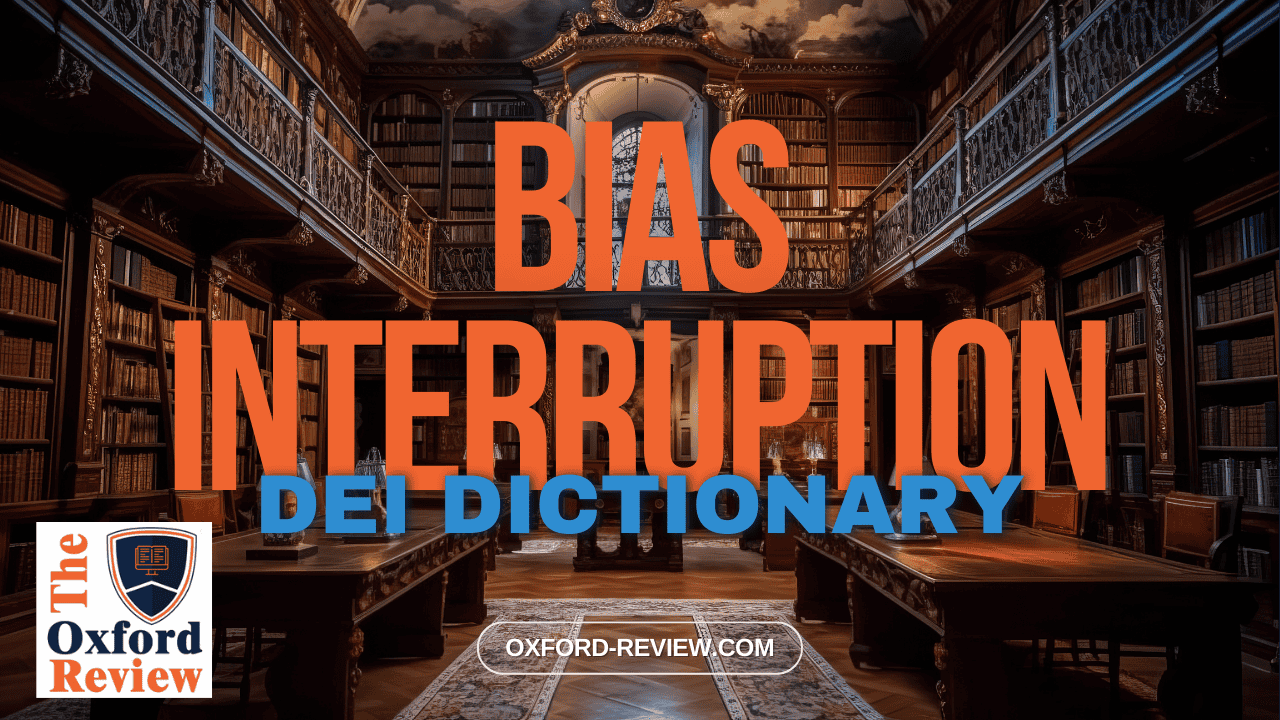Bias Interruption – Definition and Explanation

Definition:
Bias Interruption is the proactive approach of disrupting biased behaviours, thoughts, or processes to create a more equitable and inclusive environment. It involves recognising unconscious biases, confronting them, and implementing strategies to mitigate their impact. This process is essential in dismantling systemic barriers and fostering diversity and inclusion in various settings, including workplaces, educational institutions, and communities.
Significance:
In the pursuit of DEI, Bias Interruption serves as a crucial tool for promoting fairness, respect, and equality. By acknowledging and addressing biases, organisations can create a culture that values diversity and ensures that all individuals have equal opportunities for success. Moreover, Bias Interruption fosters empathy, understanding, and collaboration among diverse groups, leading to innovation and positive social change.
Example:
Consider a hiring committee tasked with selecting candidates for a managerial position. Despite efforts to remain impartial, unconscious biases may influence the decision-making process. Through Bias Interruption, committee members actively challenge these biases by implementing strategies such as blind resume reviews, structured interviews, and diversity training. By interrupting biases, the committee ensures that candidates are evaluated based on their qualifications and merit, rather than irrelevant factors such as gender, race, or ethnicity.
Implementing Bias Interruption Strategies:
To effectively integrate Bias Interruption into DEI initiatives, organisations can adopt various strategies:
- Training and Education: Provide comprehensive training programs to raise awareness of unconscious biases and equip individuals with tools to interrupt them effectively.
- Promoting Diversity in Leadership: Foster diverse leadership representation to cultivate an inclusive organisational culture and encourage diverse perspectives.
- Data-Driven Decision Making: Utilise data analytics to identify patterns of bias and implement targeted interventions to address them.
- Creating Safe Spaces: Establish forums where individuals feel empowered to address biases openly and engage in constructive dialogue.
Conclusion:
In conclusion, Bias Interruption plays a fundamental role in advancing DEI efforts by challenging biases and fostering inclusivity. By acknowledging the existence of biases and implementing proactive strategies to interrupt them, organisations can create environments where every individual feels valued, respected, and empowered to thrive. Through collective action and commitment, Bias Interruption paves the way for a more equitable and inclusive society.
Be impressively well informed

Get the very latest research intelligence briefings, video research briefings, infographics and more sent direct to you as they are published
Be the most impressively well-informed and up-to-date person around...
